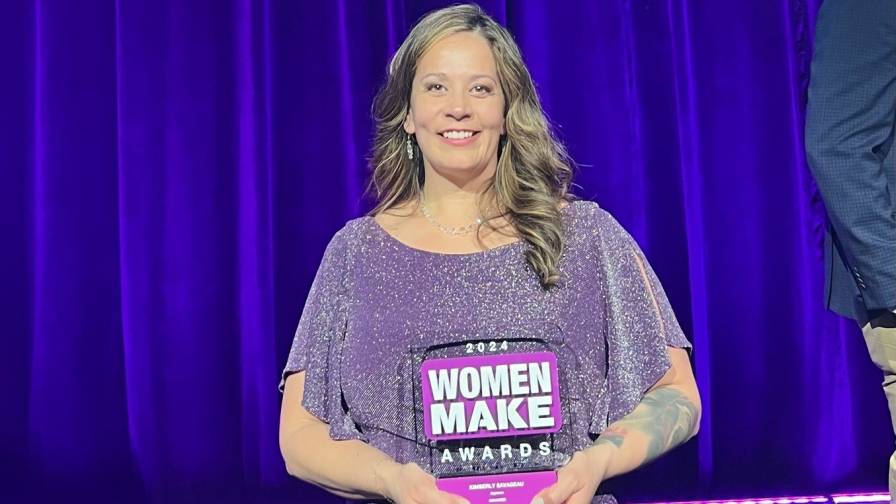Tanks and Containment in Ag Retail: Stewardship, Expansion Drive Business Forward
Despite detrimental weather late in 2018 and much of this year, the tank and containment industry is, at worst, experiencing an inconsistent 2019 campaign.
Several companies express complete satisfaction with their performances thus far.
“Although 2019 has been one of the wettest and coldest seasons in years, our company has experienced substantial growth,” says Agra Liners President Javier Ramirez.
For Precision Tank, it’s been a “good year” for shop-built and field-erected tanks (FET), according to President and CEO David Hemming. “Our piping and FET business especially gained momentum this year,” he says.
Chris Brooks, the Sales Manager with Heartland Tank, is succinct in describing business in 2019 — “robust!”
At Enviropac, the company has been successfully dealing with a “series of peaks and valleys,” Owner Dennis Neal says.
“The weather in the spring affected both our farm business and ag retailer business in a negative or delayed pattern,” Neal says. “Once the weather cleared, the market picked up very briskly, and we see 2019 running stronger than last year.”
Neal cites two reasons behind Enviropac’s positive performance: “Retail businesses that plan for the future continue to expand and replace assets that are beyond their service lives,” he says. “And the stewardship of our environment plays a major role in the maintenance and/or replacement of tanks and containment systems.”
Ramirez agrees, saying regulations on environmental factors, such as waste disposal, fire hazards, and land/water/air pollution, impact everyone, including the agricultural industry.
“These regulations result in new technology or products to provide eco-friendly solutions,” he says. “Agra Liners takes pride in providing a solution to prevent soil contamination. In fertilizer tanks, our liners serve as primary containment, and the tank becomes the secondary. Installing liners inside fertilizer tanks prevents fertilizer leaks, protects the integrity of your tank, and saves money and time in the long run. Liners are also low maintenance; only one liner inspection per year is recommended.”
Precision Tank’s success, Hemming says, stems from the general consolidation trend in the agriculture industry. “Larger companies trend toward larger hub facilities going out for perhaps a 30-mile radius,” he says.
Meanwhile, according to Brooks, pricing and take requirements of liquid manufacturers are driving wholesale and retailers to build more large tanks to capture lower pricing and have required volumes throughout the season to meet their customer requirements. In addition, he says, transportation availability and cost also play a significant role in retailers’ evaluation for additional storage.
A Look Toward 2020
The state of the industry moving forward isn’t crystal clear. Brooks, on one hand, expects a “continuation of robust sales.” Ramirez believes the liner industry will “keep growing in popularity, moving the market to look for more long-term, cost-effective ways to prolong the lifespan of tanks.”
Precision Tank is cautiously optimistic about the tank and piping market in 2020, Hemming says. “While we are all concerned about tariffs and commodity prices, it appears many customers are building new facilities to serve a larger geography out of a single site,” he says. “We perceive these customers are wisely taking the long-term view of the market.”
Determining the direction for 2020 is difficult, Neal says. Crop production in 2019 will be a major influence on the grower market in 2020, he says, and the ag dealer with long-term plans should remain steady in the near future.
Meanwhile, the approval by the current administration for year-round 15% ethanol blends (E15) “should be an excellent boost to the market,” Neal says. “Increasing the market for corn in the ethanol industry by 50% will help save the refineries and provide an increased market for our commodities.”
Company Initiatives
Heartland Tank plans to educate customers about API 650 tank specifications and why steel quality is so important, Brooks says. The company will also focus on API 653 inspection requirements and the impact they have on extending the life of the storage tank and containment system in place. In addition, Brooks says Heartland is still building “heated tank systems” to handle products such as Am Thiosulfate in cold climates. He also notes Heartland’s ability to turn-key installations from the ground up, including certified foundation design by registered engineers.
Precision Tank is focusing on adapting a new welding technology for its FET while building on the success of its girth welders. Meanwhile, the trend toward fiberglass tanks continues to build, Hemming says, due to their longevity, particularly for new facilities. Precision Tank also experienced “a lot of interest” at summer shows, thanks to a complete nurse tank mounted on a trailer, with stainless piping and flush tanks.
Agra Liners boasts flexible PVC tank liners that can be custom fit for most vessels at a low cost for a quick long-term solution for primary or secondary containment, Ramirez says. “Our experience in working with tank liners over 60 years, along with our hard-working team, allows us to provide a satisfactory guaranteed job,” he says.
Enviropac has been able to provide up to 50,000-gallon shop-built tanks, which has been a “real plus for ag dealers,” Neal says. “In certain areas, the cost per gallon has been very competitive and provides increased capacity at lower costs.”
At DAKK Manufacturing, the year 2019 will always be special one way or the other. The company, led by Owner Daniel Solis, began operations in February.
“We’ve been moving at a high rate of speed ever since,” says Outside Sales Account Manager Cory Wiley. “Our 2019 thus far can be summed up in a few words: exciting, fun, and rapid growth. The future is looking great and promising. We expect the containment industry to maintain its level of necessity, and the amount of new construction should be the same.”








